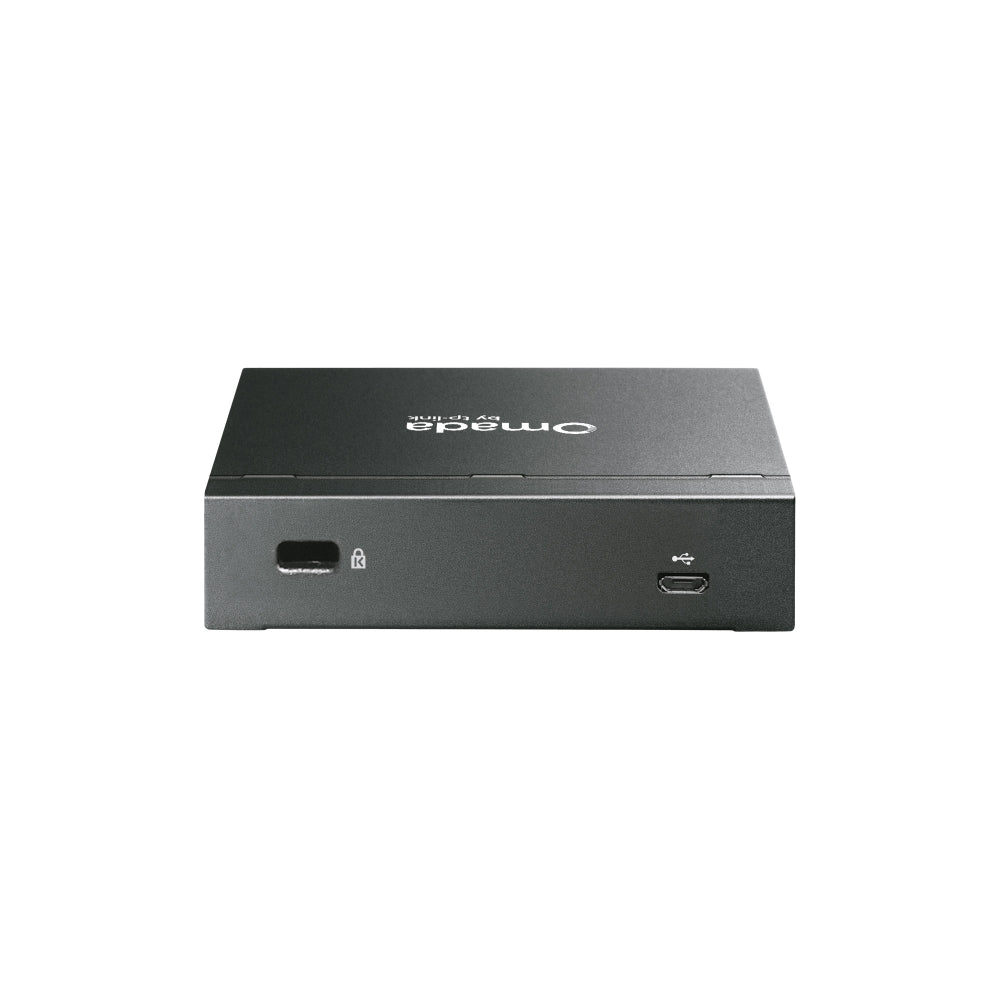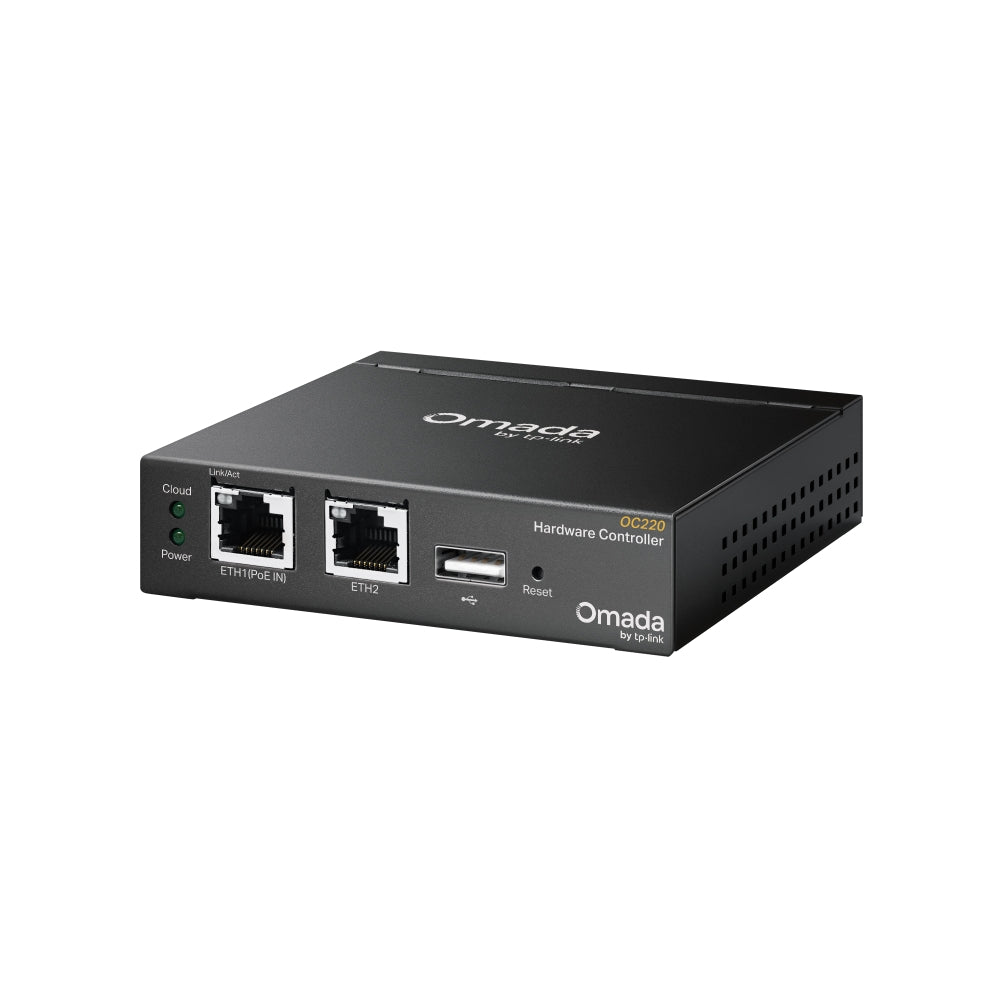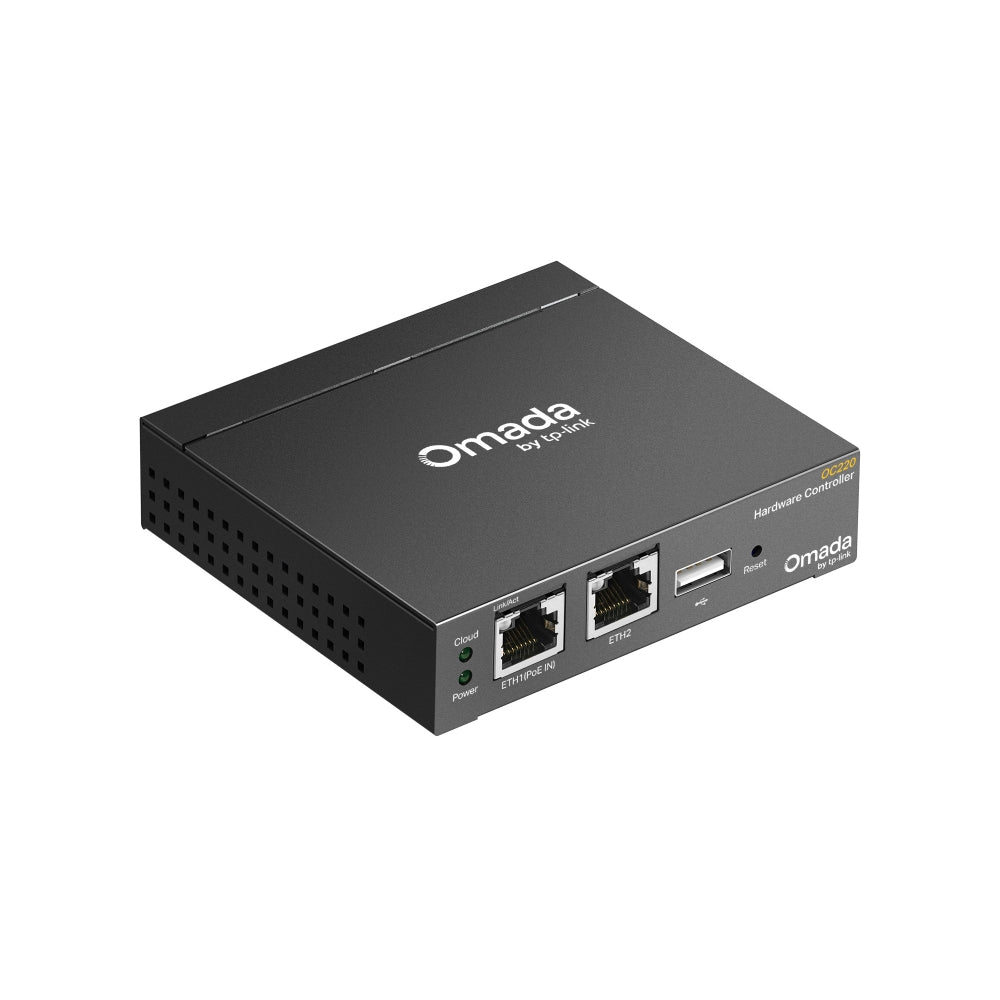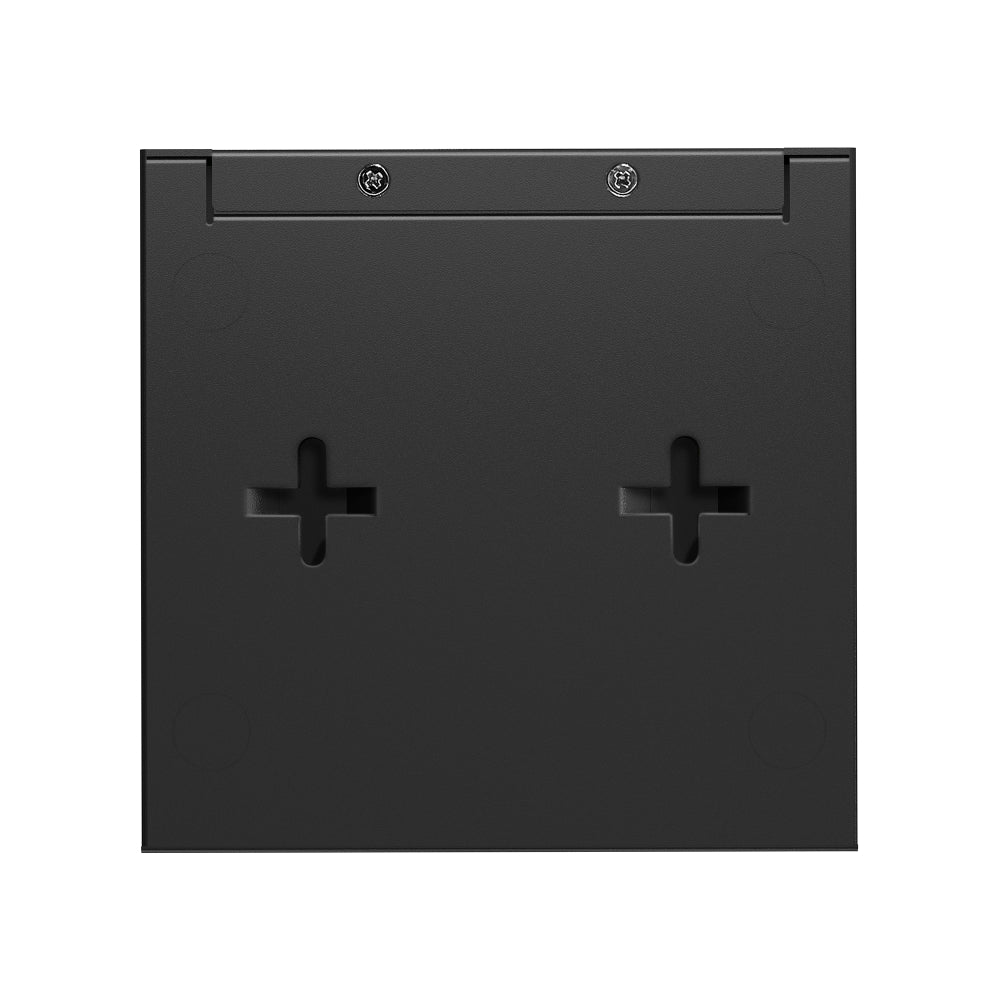- Home
- Omada Hardware Controller, OC220
Omada Hardware Controller, OC220
Upgrade from OC200 for faster startup time
- Centralized Management: Supports up to 100 Omada access points, 10 Omada gateways, a maximum of 20 Omada switches, and a maximum of 2 certain DeltaStream GPON OLTs*
- Free Cloud Access: Manage and monitor with the Omada app or Web UI from anywhere, anytime.
- On-Premises Management: Locally monitor and manage devices with the ultimate stability and complete privacy.
- Hardware Design for Businesses: Features a powerful chipset, durable metal casing, USB 2.0 port for data backup, and two Gigabit Ethernet ports.
- Flexible Deployment: Powerd via 802.3af PoE or Micro USB (DC 5V/Minimum 1A) with a compact desktop or wall mount installation.
4.0/5.0
4 reviews
Couldn't load pickup availability

What is the difference between OC200 and OC220?
OC220 is the upgrade version of OC200 which has a larger eMMC. The startup time will be reduced significantly.
Recently viewed
Excellent controller that ties the whole Omada system together. The TP-Link OC220 makes managing multiple access points, switches, and routers effortless. Setup was simple, and the web and mobile interfaces are clean, fast, and intuitive.
Once everything is adopted, the controller provides a clear view of the entire network—clients, traffic, VLANs, and performance trends—all in one place. Updates are easy, backups are automatic, and it’s been completely reliable.
If you’re building a serious Omada network, the OC220 is worth every penny. It just works and keeps your network running smoothly.
Overview
The TP-Link OC220 is marketed as a dedicated hardware controller for the Omada SDN ecosystem, designed to centrally manage routers, switches, and access points without reliance on the cloud. It delivers local management, offline control, and data privacy — all wrapped in a compact, fanless enclosure.
Unfortunately, while the software side is mature, the hardware form factor makes little sense for most professional environments.
Hardware & Design
The OC220 is a tiny, oddly shaped desktop box that TP-Link insists on calling “business-class.” In reality, it’s the one component in the Omada stack that feels completely out of place in a structured install.
There are no rack-mount provisions, no standardized width, and no thoughtful mounting solution for network enclosures. For integrators or installers, that’s frustrating — this is the exact piece that should live neatly alongside your gateway or PoE switch.
Its size and design seem better suited for sitting on a desk or shelf, but in a commercial or even modern residential “micro-rack” environment, it simply doesn’t belong.
Performance & Functionality
From a functionality standpoint, it does what it promises:
• Manages up to 500 Omada devices (routers, switches, APs).
• Provides centralized configuration, firmware management, and unified monitoring.
• Offers zero-touch provisioning, captive portal, and network topology mapping.
• Integrates cleanly with Omada Cloud and mobile app interfaces.
It’s stable, efficient, and easy to maintain. However, given the evolution of TP-Link’s Omada Cloud-Based Controller, the hardware unit’s necessity is increasingly questionable. The cloud controller is free, fast, and functionally identical — making the OC220 redundant for all but air-gapped or privacy-sensitive networks.
Use Case
Ideal for:
• Offline or closed-network deployments where cloud access is restricted.
• Installations requiring local control for compliance or security reasons.
Less ideal for:
• Modern home and SMB installs, where cloud management is simpler, free, and more accessible.
• Rack-based setups, since the OC220 has nowhere elegant to go.
Verdict
The OC220 performs exactly as advertised, but its relevance and form factor are mismatched to today’s deployment environments. In an era where cloud management is fast, secure, and free, this hardware controller adds more clutter than capability for most users.
If TP-Link released a 1U rack-mount or modularized controller, it could reclaim a role in professional installs. Until then, this is more of a legacy bridge device than a core component.
Just got the new OC220, you can't load the backup from an updated OC200 on v5.10.x, as the OC220 is only V5.0.x. OMADA support indicates either build new or wait till V6 is released. Pretty stupid business decision to release it with old firmware that you can't load a backup.
Apologies for the inconvience caused. Thank you for sharing this problem. The 5.15.24 firmware for OC220 will be available by the end of September 2025.
The OC220 new firmware (V5.15.24) has been uploaded.
https://support.omadanetworks.com/us/product/oc220/?resourceType=download
Update: They did put out an update now so you can backup/restore from an existing omada controller. Previously it only had outdated firmware that was incompatible with current omada software.
Now that I can try it....Yes it is much faster than the OC200. It boots much quicker and is very responsive. Between this and the OC200 there is no reason at all to buy the 200 anymore. The migration from the 200 took about 3-4 minutes and the network was only down for 30-45 seconds. All the devices, Vlans, Wans (primary and failover), Wlans, DHCP reservations and devices names copied over correctly.
Apologies for the inconvience caused. Thank you for sharing this problem. The 5.15.24 firmware for OC220 will be available by the end of September 2025.
The OC220 new firmware (V5.15.24) has been uploaded.
https://support.omadanetworks.com/us/product/oc220/?resourceType=download





